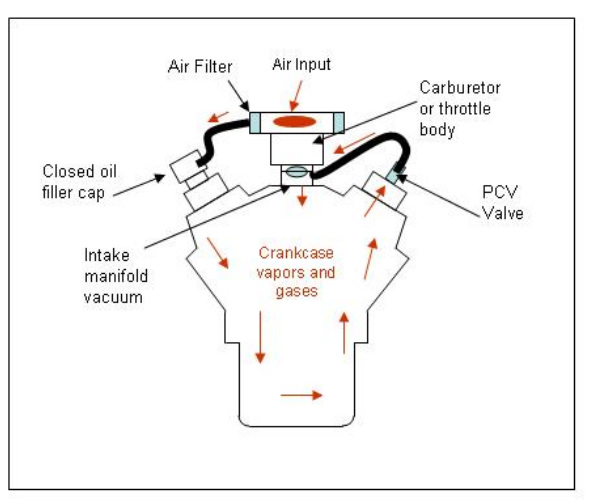hi everyone!
I'm having oil spill trouble with my 259 commander v8 which I have built into my 55 e series truck. Hopefully you guys can help me out with!? Here's what's going on...
Initially, mainly at higher RPM's, I had two occasions of oil spill / spray coming from oil being pushed up into the oil filler tube (front), covered by the breather. I would expect the air / oil flow to go into the breather and back into the tube but for some reason it spills out of the breather. The fan than sprays it througout the engine bay, causing a big mess.
I tried to fix this by installing a pcv taking the gasses from the rear end of the block (firewall side, where the ventilation tube used to be)back into the intake. With that I removed the breather on the oil filler tube (front of engine) and replaced it with and oil filler cap (closed, no breather). From what I understand, this is a 'closed system'?
However, it now spills oil through the valve cover gasket on the left, spilling onto the header and the exhaust. Last night, I lost almost all oil pressure and oil, so it really spills a lot! I have no breathers on the valve covers. Will that solve the problem or cause oil spill through those?
I'm also reading about installing a crank case kit and oil pan breather? Will this be the solution to my problem?
I hope you guys understand or maybe even recognise what's wrong. All your help and advise is highly appreciated.
Thank you, greetz from the Netherlands, Europe!
Polle
I'm having oil spill trouble with my 259 commander v8 which I have built into my 55 e series truck. Hopefully you guys can help me out with!? Here's what's going on...
Initially, mainly at higher RPM's, I had two occasions of oil spill / spray coming from oil being pushed up into the oil filler tube (front), covered by the breather. I would expect the air / oil flow to go into the breather and back into the tube but for some reason it spills out of the breather. The fan than sprays it througout the engine bay, causing a big mess.
I tried to fix this by installing a pcv taking the gasses from the rear end of the block (firewall side, where the ventilation tube used to be)back into the intake. With that I removed the breather on the oil filler tube (front of engine) and replaced it with and oil filler cap (closed, no breather). From what I understand, this is a 'closed system'?
However, it now spills oil through the valve cover gasket on the left, spilling onto the header and the exhaust. Last night, I lost almost all oil pressure and oil, so it really spills a lot! I have no breathers on the valve covers. Will that solve the problem or cause oil spill through those?
I'm also reading about installing a crank case kit and oil pan breather? Will this be the solution to my problem?
I hope you guys understand or maybe even recognise what's wrong. All your help and advise is highly appreciated.
Thank you, greetz from the Netherlands, Europe!
Polle


 thanks so much everyone, you are a great help and I'm learning as I go!!!
thanks so much everyone, you are a great help and I'm learning as I go!!!
Comment